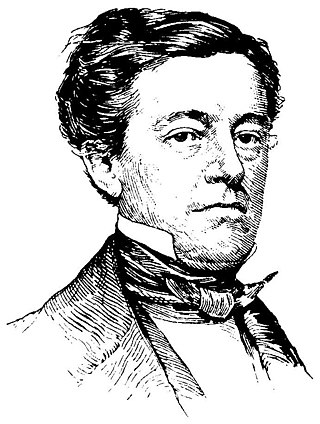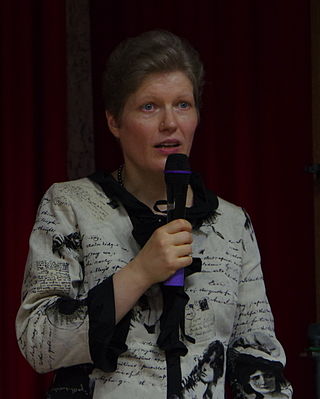Related Research Articles

Amateur astronomy is a hobby where participants enjoy observing or imaging celestial objects in the sky using the unaided eye, binoculars, or telescopes. Even though scientific research may not be their primary goal, some amateur astronomers make contributions in doing citizen science, such as by monitoring variable stars, double stars, sunspots, or occultations of stars by the Moon or asteroids, or by discovering transient astronomical events, such as comets, galactic novae or supernovae in other galaxies.

The United States Naval Observatory (USNO) is a scientific and military facility that produces geopositioning, navigation and timekeeping data for the United States Navy and the United States Department of Defense. Established in 1830 as the Depot of Charts and Instruments, it is one of the oldest scientific agencies in the United States, and remains the country's leading authority for astronomical and timing data for all purposes.

Astrophysics is a science that employs the methods and principles of physics and chemistry in the study of astronomical objects and phenomena. As one of the founders of the discipline, James Keeler, said, Astrophysics "seeks to ascertain the nature of the heavenly bodies, rather than their positions or motions in space–what they are, rather than where they are." Among the subjects studied are the Sun, other stars, galaxies, extrasolar planets, the interstellar medium and the cosmic microwave background. Emissions from these objects are examined across all parts of the electromagnetic spectrum, and the properties examined include luminosity, density, temperature, and chemical composition. Because astrophysics is a very broad subject, astrophysicists apply concepts and methods from many disciplines of physics, including classical mechanics, electromagnetism, statistical mechanics, thermodynamics, quantum mechanics, relativity, nuclear and particle physics, and atomic and molecular physics.

Vera Florence Cooper Rubin was an American astronomer, who pioneered work on galaxy rotation rates. She uncovered the discrepancy between the predicted and observed angular motion of galaxies by studying galactic rotation curves. By identifying the galaxy rotation problem, her work provided evidence for the existence of dark matter. These results were later confirmed over subsequent decades.

Cecilia Payne-Gaposchkin was a British-born American astronomer and astrophysicist who proposed in her 1925 doctoral thesis that stars were composed primarily of hydrogen and helium. Her groundbreaking conclusion was initially rejected because it contradicted the scientific wisdom of the time, which held that there were no significant elemental differences between the Sun and Earth. Independent observations eventually proved she was correct. Her work on the nature of variable stars was foundational to modern astrophysics.

Eleanor Margaret Burbidge, FRS (née Peachey; 12 August 1919 – 5 April 2020) was a British-American observational astronomer and astrophysicist. In the 1950s, she was one of the founders of stellar nucleosynthesis and was first author of the influential B2FH paper. During the 1960s and 1970s she worked on galaxy rotation curves and quasars, discovering the most distant astronomical object then known. In the 1980s and 1990s she helped develop and utilise the Faint Object Spectrograph on the Hubble Space Telescope. Burbidge was also well known for her work opposing discrimination against women in astronomy.
Otto Struve was a Russian-American astronomer of Baltic German origins. In Russian, his name is sometimes given as Otto Lyudvigovich Struve ; however, he spent most of his life and his entire scientific career in the United States. Otto was the descendant of famous astronomers of the Struve family; he was the son of Ludwig Struve, grandson of Otto Wilhelm von Struve and great-grandson of Friedrich Georg Wilhelm von Struve. He was also the nephew of Karl Hermann Struve.

James Melville Gilliss was an astronomer, United States naval officer and founder of the United States Naval Observatory.
Lisa Jennifer Kewley is an Australian Astrophysicist and current Director of the Center for Astrophysics | Harvard & Smithsonian. Previously, Kewley was Director of the ARC Centre of Excellence for All Sky Astrophysics in 3-D and ARC Laureate Fellow at the Australian National University College of Physical and Mathematical Sciences, where she was also a Professor. Specialising in galaxy evolution, she won the Annie Jump Cannon Award in Astronomy in 2005 for her studies of oxygen in galaxies, and the Newton Lacy Pierce Prize in Astronomy in 2008. In 2014 she was elected a fellow of the Australian Academy of Science. In 2020 she received the James Craig Watson Medal. In 2021 she was elected as an international member of the National Academy of Sciences. In 2022 she became the first female director of the Center for Astrophysics | Harvard & Smithsonian.

Eva K. Grebel is a German astronomer. Since 2007 she has been co-director of the Astronomisches Rechen-Institut at the University of Heidelberg in Germany. Eva Grebel is an expert in the study of stellar populations and galaxy formation.

Isabel Martin Lewis was an American astronomer who was the first woman hired by the United States Naval Observatory as assistant astronomer. In 1918, Lewis was elected a member of the American Astronomical Society. She was also a member of the Royal Astronomical Society of Canada and the Astronomical Society of the Pacific.
Mary Teresa Brück was an Irish astronomer, astrophysicist and historian of science, whose career was spent at Dunsink Observatory in Dublin and the Royal Observatory Edinburgh in Scotland.
Judith Gamora Cohen, is an American astronomer and the Kate Van Nuys Page Professor of Astronomy at the California Institute of Technology. She is a recognized expert regarding the Milky Way Galaxy, particularly with respect to the Galaxy's outer halo. She also played a key role in the design and construction of the Keck Telescope.

Sidney Carne Wolff is an American astrophysicist, researcher, public educator, and author. She is the first woman in the United States to head a major observatory, and she provided significant contributions to the construction of six telescopes. Wolff served as Director of the Kitt Peak National Observatory (KPNO) and the National Optical Astronomy Observatory (NOAO). She is a member of the International Astronomical Union's Division G: Stars and Stellar Physics.

Nirupama Raghavan was an Indian astrophysicist, weather scientist, historian of science and educator. She was the Director of the Nehru Planetarium in New Delhi.

Julena Steinheider Duncombe (1911–2003) was an American mathematician and astronomer. She was known for her work as a teacher at the Heart Mountain Relocation Center and as an astronomer at the United States Naval Observatory, where she made pioneering observations with the 6-inch transit circle, introduced the use of punched cards in cataloging stars and constructing tables of positions of celestial bodies, and led the production of eclipse predictions for almanacs.

Nan Dieter-Conklin, also known as Nannielou Reier Hepburn Dieter Conklin, was an American radio astronomer.
Jacqueline K. (Jackie) Faherty is an American astronomer specializing in infrared astronomy and the observation of nearby stars and brown dwarfs, and known for her public outreach in space science. She works at the American Museum of Natural History as a senior scientist in the museum's Department of Astrophysics and a senior education manager in the Department of Education.
Brenda G. Corbin is a retired American astronomy librarian who worked for many years as the librarian of the James M. Gillis Library in the United States Naval Observatory, and who is known for founding the Library and Information Services in Astronomy (LISA) conference series. She was honored in 2020 by being named a Legacy Fellow of the American Astronomical Society.
Kathleen DeGioia Eastwood is an American astronomer known for her research on the formation and evolution of massive stars, and for her work on undergraduate education in astronomy. She is a professor emerita of astronomy and planetary science at Northern Arizona University.
References
- ↑ Physics Department Faculty, United States Naval Academy, retrieved 2022-05-25
- 1 2 3 Chester, Geoff (February 25, 2020), "USNO staff members named as first AAS Fellows" (PDF), News! From the Naval Observatory, United States Naval Observatory, retrieved 2022-05-25
- 1 2 Astrophysics Research, United States Naval Academy, retrieved 2022-05-25
- ↑ "Astronomers measure new distances to nearby stars" (PDF), Phys.org, October 5, 2017
- 1 2 3 Bartlett, Jennifer (2016), Jennifer L. Bartlett, Ph.D., Astronomer , retrieved 2022-05-25
- 1 2 3 4 5 "Jennifer Bartlett", ORCiD, retrieved 2022-05-25
- ↑ Bartlett, Jennifer Lynn (November 10, 2009), Knowing Our Neighbors: Fundamental Properties of Nearby Stars (doctoral dissertation), University of Virginia, archived from the original on 2011-07-20